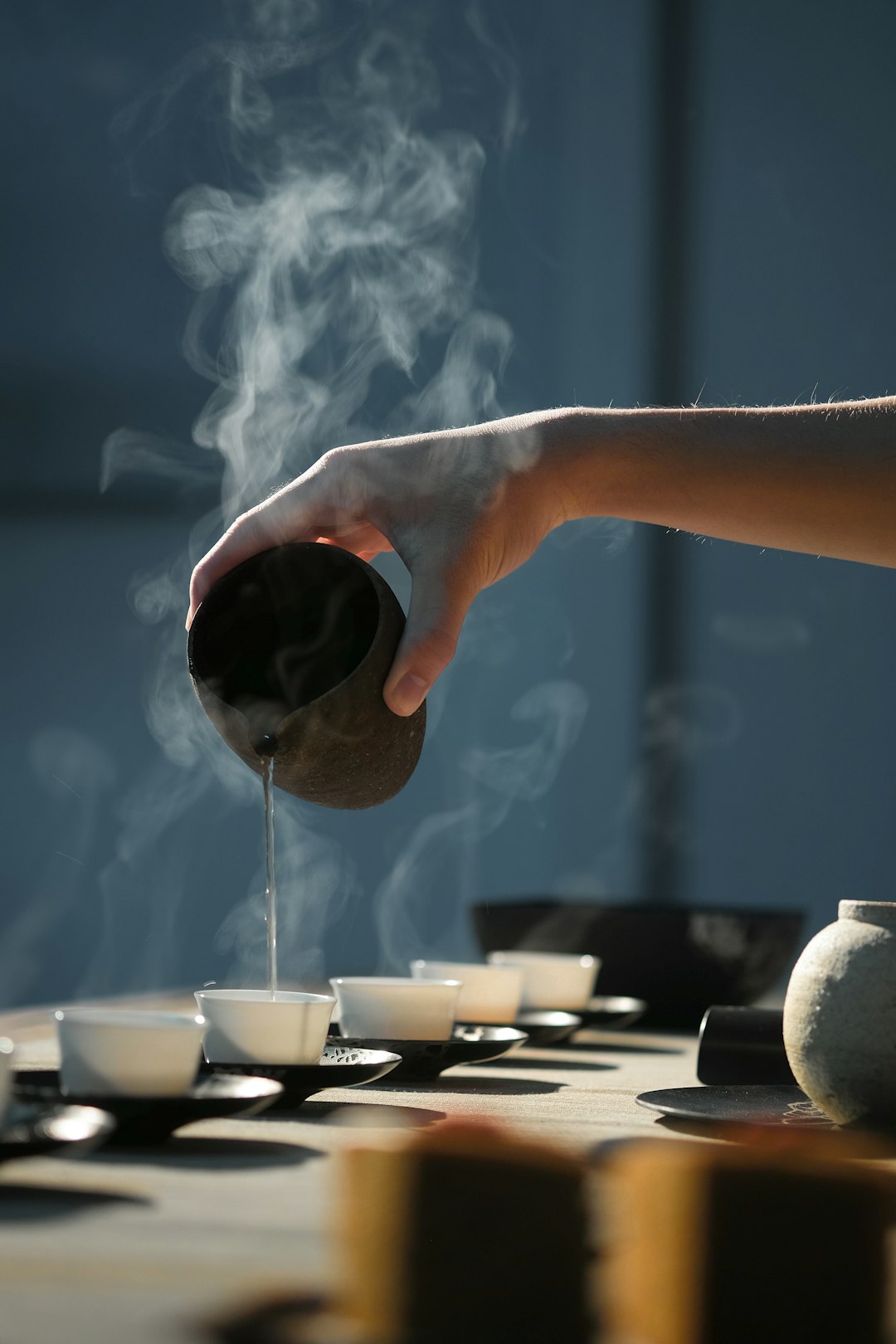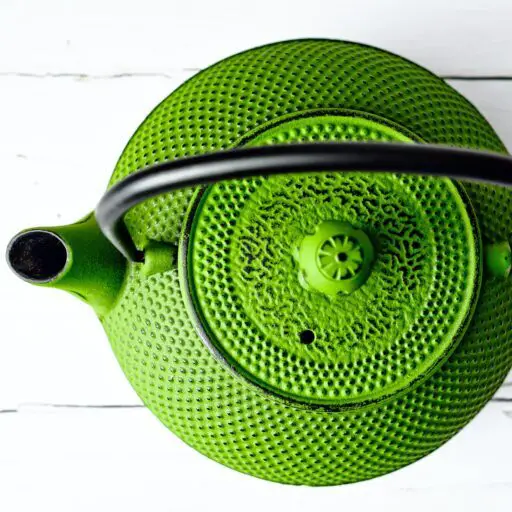Support our educational content for free when you purchase through links on our site. Learn more
Which Tea Offers the Best Taste in the World? Top 15 Picks! 🍵 [2025]
When it comes to tea, the quest for the best taste is a journey that transcends borders and cultures. With thousands of varieties to choose from, how do you find the ones that truly stand out? 🤔 In this article, we’ll explore the top 15 teas that have captivated tea lovers around the globe. From the delicate floral notes of Darjeeling to the robust flavors of Assam, each tea has its own story and unique flavor profile that can transport you to its place of origin.
Did you know that tea is the second most consumed beverage in the world, right after water? 🌍 This beloved drink not only offers a plethora of flavors but also boasts numerous health benefits. So, whether you’re a seasoned tea connoisseur or just dipping your toes into the world of tea, we’ve got you covered! Get ready to sip and savor the finest brews that the world has to offer.
Key Takeaways
- Diverse Flavors: The article highlights 15 exceptional teas from around the world, showcasing their unique flavor profiles.
- Cultural Significance: Tea is not just a beverage; it’s a cultural experience that brings people together.
- Brewing Tips: Learn how to brew the perfect cup to enhance the flavors of your chosen tea.
- Pairing Suggestions: Discover delicious food pairings that complement your favorite brews.
- Health Benefits: Many teas are packed with antioxidants and other health-promoting properties.
Ready to explore these delightful teas? 👉 Shop the best tea selections on Amazon or check out our Tea Brand Spotlights for more recommendations!
Table of Contents
- Quick Tips and Facts
- The Global Quest for the Best-Tasting Tea
- Top 15 Teas That Will Tickle Your Taste Buds
- Exploring the Unique Flavors of Different Tea Types
- How to Brew the Perfect Cup of Tea
- The Art of Tea Tasting: What to Look For
- Get the VIP Treatment: Elevating Your Tea Experience
- Tea Pairings: What Goes Best with Your Favorite Brew?
- Cultural Significance of Tea Around the World
- Health Benefits of Drinking Tea: More Than Just Taste
- Sustainable Tea: Choosing Eco-Friendly Brands
- Conclusion
- Recommended Links
- FAQ
- Reference Links
Quick Tips and Facts (#quick-tips-and-facts)
Did you know that tea is the second most consumed beverage in the world, after water? 🤯 From the misty mountains of China to the rolling hills of India, the quest for the best-tasting tea has captivated humankind for centuries. But here at Tea Brands™, we believe the best tea is the one that makes your taste buds sing! 🎶 Let’s embark on a flavor adventure, exploring the world’s finest teas. You might even discover your new favorite brew! 😉 For a glimpse into the origins of these exquisite teas, be sure to check out our article on The 15 Best Tea-Producing Countries in the World 🌎 2025.
Fascinating Tea Facts to Impress Your Friends:
- Legend has it that tea was discovered in 2737 BC by Chinese Emperor Shen Nong when a tea leaf fell into his boiling water. Coincidence? We think not! 😉
- Tea is made from the leaves of the Camellia sinensis plant. Who knew such a tiny leaf could hold so much flavor? 🍃
- Different processing methods create the various types of tea: black, green, white, oolong, and pu-erh. It’s like magic, but with leaves! ✨
- Tea contains antioxidants, which can help protect your body from damage. A delicious cup of health! 💪
- The way you brew your tea can drastically affect its taste. Stay tuned for our expert brewing tips! 🫖
The Global Quest for the Best-Tasting Tea (#the-global-quest-for-the-best-tasting-tea)
The pursuit of the best-tasting tea is a journey that spans continents and cultures. From the delicate floral notes of a Darjeeling First Flush to the robust earthiness of a Japanese Gyokuro, the world of tea offers a breathtaking array of flavors to explore.
What Makes a Tea “The Best”?
Ah, the age-old question! 🤔 The answer, like a perfectly brewed cup, is steeped in subjectivity. What delights one palate may leave another indifferent. Factors like personal preference, cultural background, and even the time of day can influence our perception of taste.
Here’s the tea (pun intended!): There’s no single “best” tea in the world. But there are exceptional teas that stand out for their quality, craftsmanship, and unique flavor profiles.
At Tea Brands™, we’re passionate about guiding you on your personal tea journey. Whether you’re a seasoned tea connoisseur or a curious newcomer, we’re here to help you discover the brews that will tantalize your taste buds and warm your soul. 🍵❤️
Top 15 Teas That Will Tickle Your Taste Buds (#top-15-teas-that-will-tickle-your-taste-buds)
Get your teacups ready, folks! We’re about to dive into a world of flavor with our top 15 picks for the most delicious teas on the planet. 🌎 From delicate whites to robust blacks, there’s a tea out there for every taste bud.
-
Darjeeling First Flush (India): Often called the “Champagne of Teas,” this delicate black tea boasts floral aromas and a muscatel grape sweetness. 🍇
- Flavor Profile: Floral, Muscatel, Sweet
- Best For: Afternoon tea, moments of quiet contemplation
👉 CHECK PRICE on: Amazon
-
Gyokuro (Japan): This shade-grown green tea is prized for its rich umami flavor and emerald green liquor. 🍵
- Flavor Profile: Umami, Savory, Sweet, Vegetal
- Best For: Meditation, moments of mindful enjoyment
👉 CHECK PRICE on: Amazon
-
Tie Guan Yin (China): This oolong tea, also known as “Iron Goddess,” enchants with its creamy texture, floral aroma, and lingering sweetness. 🌸
- Flavor Profile: Floral, Creamy, Sweet, Orchid
- Best For: After dinner, enjoying with light desserts
👉 CHECK PRICE on: Amazon
-
Da Hong Pao (China): This rare oolong tea, meaning “Big Red Robe,” is grown in the Wuyi Mountains and offers a complex flavor profile with notes of roasted nuts, caramel, and spice. 🌰
- Flavor Profile: Roasted, Sweet, Spicy, Mineral
- Best For: Special occasions, savoring after a meal
👉 CHECK PRICE on: Amazon
-
Bai Hao Yinzhen (China): This white tea, also known as “Silver Needle,” is made from young tea buds covered in fine white hairs. It boasts a delicate, subtly sweet flavor with hints of honey and melon. 🍯
- Flavor Profile: Delicate, Sweet, Honeydew, Floral
- Best For: Morning or afternoon tea, pairing with light snacks
👉 CHECK PRICE on: Amazon
-
Genmaicha (Japan): This unique green tea is blended with roasted brown rice, creating a nutty and savory flavor profile. 🍚
- Flavor Profile: Nutty, Savory, Roasted, Toasty
- Best For: Everyday drinking, enjoying with meals
👉 CHECK PRICE on: Amazon
-
Matcha (Japan): This finely ground green tea powder is whisked with water to create a vibrant and energizing beverage. It’s known for its rich umami flavor and health benefits. ⚡️
- Flavor Profile: Umami, Vegetal, Sweet, Earthy
- Best For: Morning boost, using in lattes and desserts
👉 CHECK PRICE on: Amazon
-
Assam (India): This bold and malty black tea from the Assam region of India is perfect for those who prefer a strong and robust brew. ☕
- Flavor Profile: Malty, Strong, Brisk, Astringent
- Best For: Breakfast, enjoying with milk and sugar
👉 CHECK PRICE on: Amazon
-
Lapsang Souchong (China): This black tea is smoked over pinewood fires, giving it a distinctive smoky and piney aroma and flavor. 🔥🌲
- Flavor Profile: Smoky, Piney, Earthy, Tarry
- Best For: Adventurous palates, enjoying after dinner
👉 CHECK PRICE on: Amazon
-
Earl Grey (Black Tea Blend): This classic black tea blend is flavored with oil of bergamot, giving it a citrusy and refreshing aroma. 🍊
- Flavor Profile: Citrusy, Floral, Bergamot, Brisk
- Best For: Afternoon tea, enjoying with a splash of milk
👉 CHECK PRICE on: Amazon
-
Rooibos (South Africa): This naturally sweet and caffeine-free herbal tea, also known as “red bush tea,” offers a smooth and refreshing taste. 🇿🇦
- Flavor Profile: Sweet, Nutty, Fruity, Earthy
- Best For: Evening relaxation, enjoying hot or cold
👉 CHECK PRICE on: Amazon
-
Chamomile (Herbal Tea): This soothing and floral herbal tea is known for its calming properties and is often enjoyed before bedtime. 🌼
- Flavor Profile: Floral, Apple-like, Sweet, Earthy
- Best For: Evening relaxation, promoting sleep
👉 CHECK PRICE on: Amazon
-
Peppermint (Herbal Tea): This refreshing and invigorating herbal tea is known for its digestive benefits and cooling sensation. 🌿
- Flavor Profile: Minty, Cooling, Sweet, Invigorating
- Best For: After meals, soothing an upset stomach
👉 CHECK PRICE on: Amazon
-
Hibiscus (Herbal Tea): This tart and tangy herbal tea is made from dried hibiscus flowers and is packed with antioxidants. 🌺
- Flavor Profile: Tart, Cranberry-like, Floral, Refreshing
- Best For: Enjoying cold as a refreshing beverage
👉 CHECK PRICE on: Amazon
-
Ginger (Herbal Tea): This spicy and warming herbal tea is made from ginger root and is known for its soothing properties. It’s often enjoyed to relieve nausea and aid digestion. 🧘
- Flavor Profile: Spicy, Warming, Zesty, Soothing
- Best For: Cold days, relieving nausea
👉 CHECK PRICE on: Amazon
Exploring the Unique Flavors of Different Tea Types (#exploring-the-unique-flavors-of-different-tea-types)
Ready to delve deeper into the world of tea? Let’s unravel the secrets behind the distinct flavors of each tea type. Remember, this is just a starting point. The world of tea is vast and full of surprises! 🗺️
Black Tea: Bold and Robust
Black tea undergoes the most oxidation, resulting in its dark brown to black leaves and robust flavor. Think of it as the extrovert of the tea world – bold, assertive, and full of character.
- Flavor Profile: Bold, Malty, Brisk, Astringent, Sweet
- Popular Varieties: Assam, Darjeeling, English Breakfast, Ceylon
- Perfect for: Waking up your senses, enjoying with milk and sugar
Green Tea: Fresh and Vegetal
Green tea’s minimal processing preserves its natural green color and fresh, vegetal flavor. It’s like a breath of fresh air – light, refreshing, and invigorating. 🍃
- Flavor Profile: Fresh, Vegetal, Grassy, Umami, Sweet
- Popular Varieties: Sencha, Gyokuro, Longjing (Dragon Well), Matcha
- Perfect for: A moment of zen, enjoying its delicate flavors
White Tea: Delicate and Subtly Sweet
White tea is the least processed tea, made from young tea buds covered in fine white hairs. It’s like a whisper of flavor – delicate, subtly sweet, and incredibly smooth.
- Flavor Profile: Delicate, Sweet, Floral, Honey, Melon
- Popular Varieties: Bai Hao Yinzhen (Silver Needle), Bai Mu Dan (White Peony)
- Perfect for: A luxurious treat, savoring its nuanced flavors
Oolong Tea: A World of Diversity
Oolong tea falls between black and green tea in terms of oxidation, resulting in a wide range of flavor profiles. It’s the chameleon of the tea world – adaptable, complex, and full of surprises. 🦎
- Flavor Profile: Floral, Fruity, Roasted, Toasty, Sweet
- Popular Varieties: Tie Guan Yin (Iron Goddess), Da Hong Pao (Big Red Robe), Dong Ding
- Perfect for: Exploring a spectrum of flavors, finding your perfect match
Pu-erh Tea: Earthy and Complex
Pu-erh tea is a fermented tea that develops a rich, earthy flavor as it ages. It’s like a fine wine – complex, evolving, and best enjoyed over time. 🍷
- Flavor Profile: Earthy, Musky, Woody, Sweet, Smooth
- Popular Varieties: Shou Pu-erh (Ripe), Sheng Pu-erh (Raw)
- Perfect for: Experienced tea drinkers, appreciating its unique characteristics
How to Brew the Perfect Cup of Tea (#how-to-brew-the-perfect-cup-of-tea)
Brewing the perfect cup of tea is an art form, but don’t worry, we’re here to guide you through it. Follow these steps, and you’ll be sipping your way to tea nirvana in no time! 🧘♀️
Step 1: Choose Your Tea
The first step is the most important – choosing your tea! Consider your mood, the time of day, and your taste preferences. Need a morning pick-me-up? Reach for a robust Assam. Craving a moment of tranquility? A delicate white tea will do the trick.
Step 2: Heat the Water
The ideal water temperature varies depending on the type of tea you’re brewing. Using water that’s too hot can scorch the leaves and create a bitter taste, while water that’s not hot enough won’t extract the full flavor.
Here’s a handy guide:
| Tea Type | Water Temperature (°F) | Water Temperature (°C) |
|---|---|---|
| White Tea | 170-185 | 77-85 |
| Green Tea | 170-185 | 77-85 |
| Oolong Tea | 185-195 | 85-91 |
| Black Tea | 205-212 | 96-100 |
| Pu-erh Tea | 212 | 100 |
| Herbal Tea | 212 | 100 |
Step 3: Measure Your Tea
The general rule of thumb is to use 1 teaspoon of loose leaf tea per 8 ounces of water. However, you can adjust this based on your personal preference.
Step 4: Steep Your Tea
Steeping time is crucial for extracting the perfect flavor. Over-steeping can result in a bitter taste, while under-steeping won’t allow the flavors to fully develop.
Here’s a general guide:
| Tea Type | Steeping Time |
|---|---|
| White Tea | 1-3 minutes |
| Green Tea | 1-3 minutes |
| Oolong Tea | 3-5 minutes |
| Black Tea | 3-5 minutes |
| Pu-erh Tea | 2-4 minutes |
| Herbal Tea | 5-7 minutes |
Step 5: Enjoy!
Your perfect cup of tea is ready! Savor the aroma, take a sip, and let the flavors transport you to a world of pure tea bliss. Ahhhhh. 😌
The Art of Tea Tasting: What to Look For (#the-art-of-tea-tasting-what-to-look-for)
Tea tasting is a sensory experience that involves engaging all your senses – sight, smell, taste, and touch. It’s about appreciating the nuances of each tea and developing a deeper understanding of its unique characteristics.
Sight: Observing the Appearance
- Leaf Appearance: Take note of the color, shape, and size of the dry tea leaves. Are they tightly rolled or loosely packed? Are they a vibrant green or a deep black?
- Liquor Color: Observe the color of the brewed tea. Is it a pale yellow, a deep amber, or a vibrant green? The color can tell you a lot about the tea’s processing and oxidation level.
Smell: Inhaling the Aroma
- Dry Leaf Aroma: Bring the dry tea leaves to your nose and inhale deeply. What aromas do you detect? Are they floral, fruity, earthy, or smoky?
- Brewed Tea Aroma: Once the tea has finished steeping, lift the cup to your nose and inhale the steam. How has the aroma changed? What new notes can you detect?
Taste: Engaging Your Palate
- Take a Sip: Take a small sip of the tea and allow it to coat your entire mouth. Pay attention to the initial flavors that hit your tongue.
- Identify the Flavors: What flavors can you identify? Is the tea sweet, bitter, sour, salty, or umami? Are there any specific notes that stand out, such as floral, fruity, nutty, or spicy?
- Assess the Body: How does the tea feel in your mouth? Is it light and delicate or full-bodied and robust?
- Notice the Finish: Pay attention to the lingering taste after you swallow. Is it short and clean or long and lingering?
Touch: Feeling the Texture
- Leaf Texture: After steeping, gently feel the tea leaves. Are they soft and pliable or brittle and dry?
- Liquor Texture: How does the tea feel on your tongue? Is it smooth and silky or astringent and drying?
Get the VIP Treatment: Elevating Your Tea Experience (#get-the-vip-treatment-elevating-your-tea-experience)
Ready to take your tea game to the next level? Here are some tips to elevate your tea experience from ordinary to extraordinary:
- Invest in Quality Tea: Just like any other culinary experience, the quality of your ingredients matters. Treat yourself to high-quality loose leaf tea from reputable brands. Check out our Tea Brand Spotlights and Tea Brand Guides for inspiration!
- Use Filtered Water: Water quality can significantly impact the taste of your tea. Use filtered or spring water to avoid any unwanted flavors or odors.
- Warm Your Teapot: Before brewing, rinse your teapot with hot water to warm it up. This will help maintain the temperature of your tea and prevent it from cooling down too quickly.
- Don’t Over-Steep: Follow the recommended steeping times for your tea type to avoid bitterness. If you prefer a stronger brew, add more tea leaves instead of steeping for longer.
- Experiment with Temperature: While we recommend specific water temperatures for each tea type, feel free to experiment and find what works best for your palate.
- Explore Tea Pairings: Just like wine, tea can be paired with food to enhance both flavors. Check out our section on Tea Pairings: What Goes Best with Your Favorite Brew? for some delicious inspiration!
- Create a Tea Ritual: Turn your tea time into a mindful ritual. Find a quiet space, light a candle, put on some relaxing music, and savor every sip.
Tea Pairings: What Goes Best with Your Favorite Brew? (#tea-pairings-what-goes-best-with-your-favorite-brew)
Pairing tea with food is an art form that can elevate both the culinary and tea-drinking experience. The right tea pairing can enhance the flavors of your meal, cleanse your palate, and create a harmonious symphony of tastes.
General Guidelines for Tea Pairings:
- Match the Intensity: Pair delicate teas with light dishes and bold teas with richer flavors.
- Consider the Flavor Profiles: Look for complementary or contrasting flavors. For example, a floral Darjeeling pairs beautifully with delicate pastries, while a robust Assam can stand up to spicy Indian cuisine.
- Don’t Be Afraid to Experiment: The best tea pairings are often discovered through experimentation. Don’t be afraid to try different combinations and see what you enjoy.
Delicious Tea and Food Pairings to Try:
- Darjeeling First Flush + Cucumber Sandwiches: The delicate floral notes of Darjeeling complement the refreshing flavors of cucumber sandwiches perfectly.
- Gyokuro + Sushi: The rich umami flavor of Gyokuro pairs beautifully with the delicate flavors of sushi.
- Tie Guan Yin + Fruit Tart: The floral and slightly sweet notes of Tie Guan Yin enhance the sweetness of a fruit tart.
- Da Hong Pao + Dark Chocolate: The roasted and slightly spicy notes of Da Hong Pao create a delicious contrast with the bitterness of dark chocolate.
- Bai Hao Yinzhen + White Peach Salad: The delicate sweetness of Bai Hao Yinzhen complements the sweetness of white peaches in a refreshing salad.
- Genmaicha + Stir-Fried Noodles: The nutty and savory flavors of Genmaicha pair well with the savory flavors of stir-fried noodles.
- Matcha + Green Tea Ice Cream: The vibrant and slightly bitter notes of matcha enhance the sweetness of green tea ice cream.
- Assam + Full English Breakfast: The robust and malty flavors of Assam can stand up to the richness of a full English breakfast.
- Lapsang Souchong + Smoked Salmon: The smoky notes of Lapsang Souchong complement the smoky flavor of smoked salmon.
- Earl Grey + Lemon Poppyseed Cake: The citrusy notes of Earl Grey pair beautifully with the lemon flavor in a lemon poppyseed cake.
- Rooibos + Fruit Salad: The naturally sweet and fruity flavors of Rooibos complement the sweetness of a fruit salad.
- Chamomile + Honeycomb: The floral and slightly sweet notes of chamomile pair well with the sweetness of honeycomb.
- Peppermint + Dark Chocolate Mint Bark: The refreshing and cooling flavors of peppermint enhance the minty flavor of dark chocolate mint bark.
- Hibiscus + Spicy Chicken Tacos: The tart and tangy flavors of hibiscus cut through the spiciness of chicken tacos.
- Ginger + Spicy Thai Curry: The warming and spicy notes of ginger complement the spiciness of a Thai curry.
Cultural Significance of Tea Around the World (#cultural-significance-of-tea-around-the-world)
Tea isn’t just a beverage; it’s a cultural cornerstone, deeply woven into the fabric of societies worldwide. From ancient rituals to modern-day social gatherings, tea plays a pivotal role in bringing people together and fostering a sense of community. Let’s embark on a global journey, exploring the fascinating cultural significance of tea:
China: The Birthplace of Tea
China, the birthplace of tea, boasts a rich tea culture spanning millennia. Tea drinking in China is an art form, steeped in tradition and ritual.
- Gongfu Tea Ceremony: This elaborate tea ceremony, practiced for centuries, involves precise steps for preparing and serving tea, emphasizing mindfulness and respect for the beverage.
- Tea Houses: Tea houses are ubiquitous in China, serving as social hubs where people gather to socialize, conduct business, and enjoy a cup of tea.
- Gifting Tea: Tea is a highly valued gift in Chinese culture, often presented as a token of respect, gratitude, or friendship.
Japan: The Art of Zen and Matcha
Japan’s tea culture is deeply intertwined with Zen Buddhism, emphasizing harmony, respect, and mindfulness.
- Japanese Tea Ceremony (Chanoyu): This highly ritualized ceremony focuses on the preparation and presentation of matcha, embodying the principles of Zen philosophy.
- Matcha’s Significance: Matcha, a finely ground green tea powder, holds a special place in Japanese culture, used in tea ceremonies, traditional sweets, and even modern-day lattes.
India: Chai and a Warm Welcome
India, the second-largest producer of tea globally, has a vibrant tea culture centered around “chai” – a flavorful blend of black tea, milk, spices, and sugar.
- Chai Wallahs: Chai wallahs, street vendors specializing in chai, are a common sight in India, serving this beloved beverage to people from all walks of life.
- Guest Hospitality: Offering chai to guests is an integral part of Indian hospitality, symbolizing warmth, welcome, and a sense of community.
Britain: Afternoon Tea and a Spot of Milk
While tea isn’t native to Britain, it has become a quintessential part of British culture, synonymous with afternoon tea and a “spot of milk.”
- Afternoon Tea Tradition: Afternoon tea, a beloved British tradition, typically involves a pot of tea (usually black tea), accompanied by finger sandwiches, scones with clotted cream and jam, and pastries.
- Tea Time: Tea time is a cherished daily ritual for many Britons, a moment to pause, relax, and enjoy a cuppa.
Beyond Borders: Tea’s Global Embrace
From Morocco’s mint tea to Russia’s samovar tradition, tea has transcended borders, becoming a beloved beverage enjoyed in
Conclusion (#conclusion)

As we’ve journeyed through the world of tea, it’s clear that the quest for the best-tasting tea is as diverse and rich as the cultures that produce it. From the floral elegance of Darjeeling First Flush to the robust depth of Assam, each tea offers a unique experience that can delight your senses and warm your heart. 🌍❤️
Summary of Positives and Negatives
Positives:
- Variety: The world of tea offers an incredible range of flavors and types, ensuring that there’s something for everyone.
- Health Benefits: Many teas are rich in antioxidants and other health-promoting compounds, making them a delicious choice for wellness.
- Cultural Significance: Tea is more than just a beverage; it’s a cultural experience that fosters connection and community.
Negatives:
- Subjectivity: The “best” tea is subjective, and what one person loves, another may not.
- Quality Variability: Not all teas are created equal; some brands may not deliver the quality you expect.
- Preparation Complexity: Brewing tea to perfection can require some practice and attention to detail.
In conclusion, we confidently recommend exploring a variety of teas to find your personal favorites. Whether you prefer the delicate notes of a white tea or the bold flavors of a black tea, there’s a world of taste waiting for you. So, grab your teacup, and let the adventure begin! ☕✨
Recommended Links (#recommended-links)
- 👉 Shop Darjeeling First Flush Tea on: Amazon | Whittard Official
- 👉 Shop Gyokuro Tea on: Amazon | Teavana Official
- 👉 Shop Tie Guan Yin Tea on: Amazon | Teavivre Official
- 👉 Shop Da Hong Pao Tea on: Amazon | Teavivre Official
- 👉 Shop Bai Hao Yinzhen Tea on: Amazon | Teavivre Official
- Explore Books on Tea: The Tea Book | The Tea Companion
FAQ (#faq)

Which tea is most popular worldwide for its flavor? (#which-tea-is-most-popular-worldwide-for-its-flavor)
Earl Grey is often cited as one of the most popular teas worldwide, thanks to its distinctive flavor profile that combines black tea with bergamot oil. Its citrusy notes make it a favorite for many tea drinkers, and it can be enjoyed plain or with milk.
What factors influence the taste of tea? (#what-factors-influence-the-taste-of-tea)
Several factors can influence the taste of tea, including:
- Type of tea leaves: Different tea types (black, green, white, oolong) have unique flavor profiles.
- Growing conditions: Climate, soil, and altitude can affect the flavor of the tea leaves.
- Processing methods: How the leaves are harvested, oxidized, and dried can significantly impact the final taste.
- Brewing time and temperature: Oversteeping or using water that’s too hot can lead to bitterness, while understeeping can result in a weak flavor.
How does the region of origin affect tea flavor? (#how-does-the-region-of-origin-affect-tea-flavor)
The region where tea is grown plays a crucial role in its flavor profile. For example:
- Darjeeling (India): Known for its floral and muscatel notes, influenced by the high altitude and cool climate.
- Assam (India): Characterized by its bold, malty flavor due to the region’s rich soil and warm climate.
- Uji (Japan): Famous for its umami-rich green teas, thanks to the unique cultivation methods and climate.
Are there specific tea types known for their exceptional taste profiles? (#are-there-specific-tea-types-known-for-their-exceptional-taste-profiles)
Yes! Certain tea types are renowned for their exceptional taste profiles:
- Gyokuro: A high-quality Japanese green tea known for its sweet, umami flavor.
- Tie Guan Yin: An oolong tea with a creamy texture and floral aroma.
- Da Hong Pao: A famous Chinese oolong with complex flavors of roasted nuts and caramel.
What are some unique and flavorful tea blends to try? (#what-are-some-unique-and-flavorful-tea-blends-to-try)
Here are some unique blends to tantalize your taste buds:
- Masala Chai: A spiced black tea blend from India, typically made with milk and a mix of spices like cardamom, ginger, and cinnamon.
- Rooibos Chai: A caffeine-free herbal blend that combines rooibos with traditional chai spices for a unique twist.
- Earl Grey Lavender: A delightful blend of Earl Grey tea with lavender flowers, adding a floral note to the classic flavor.


